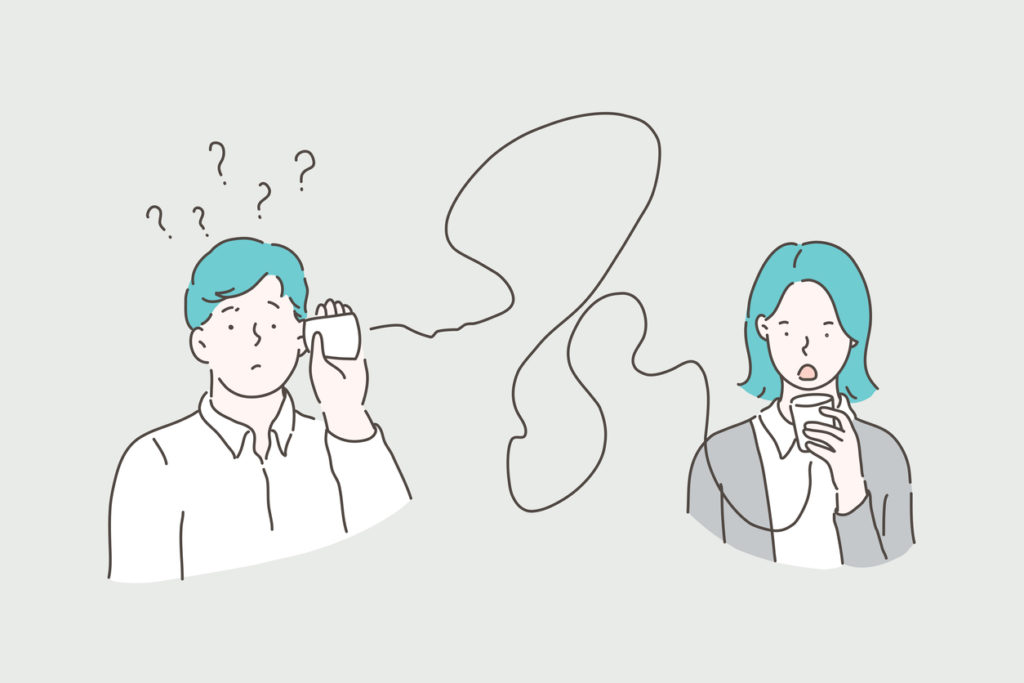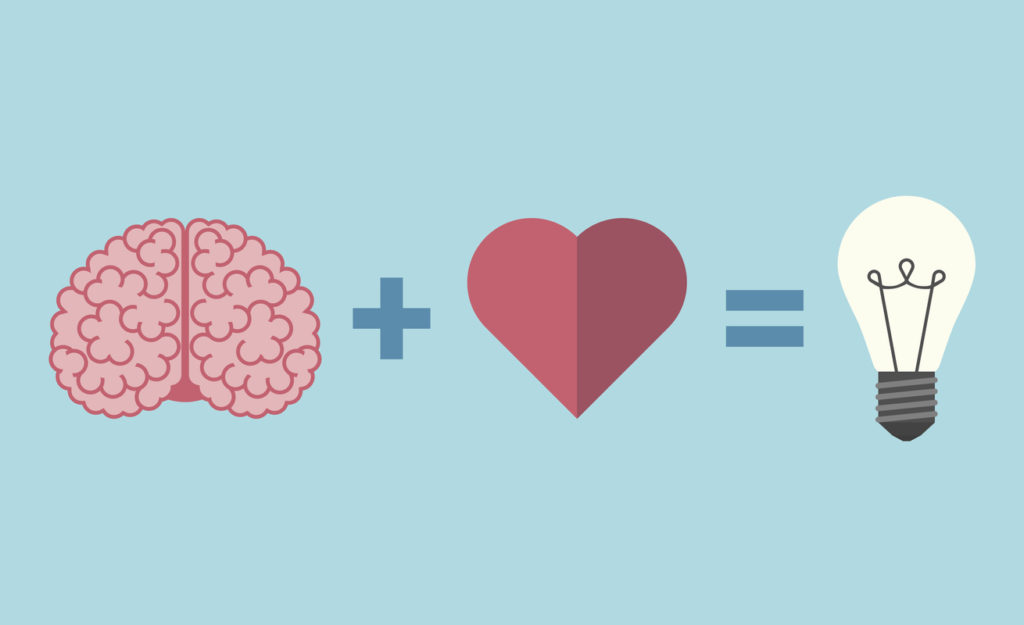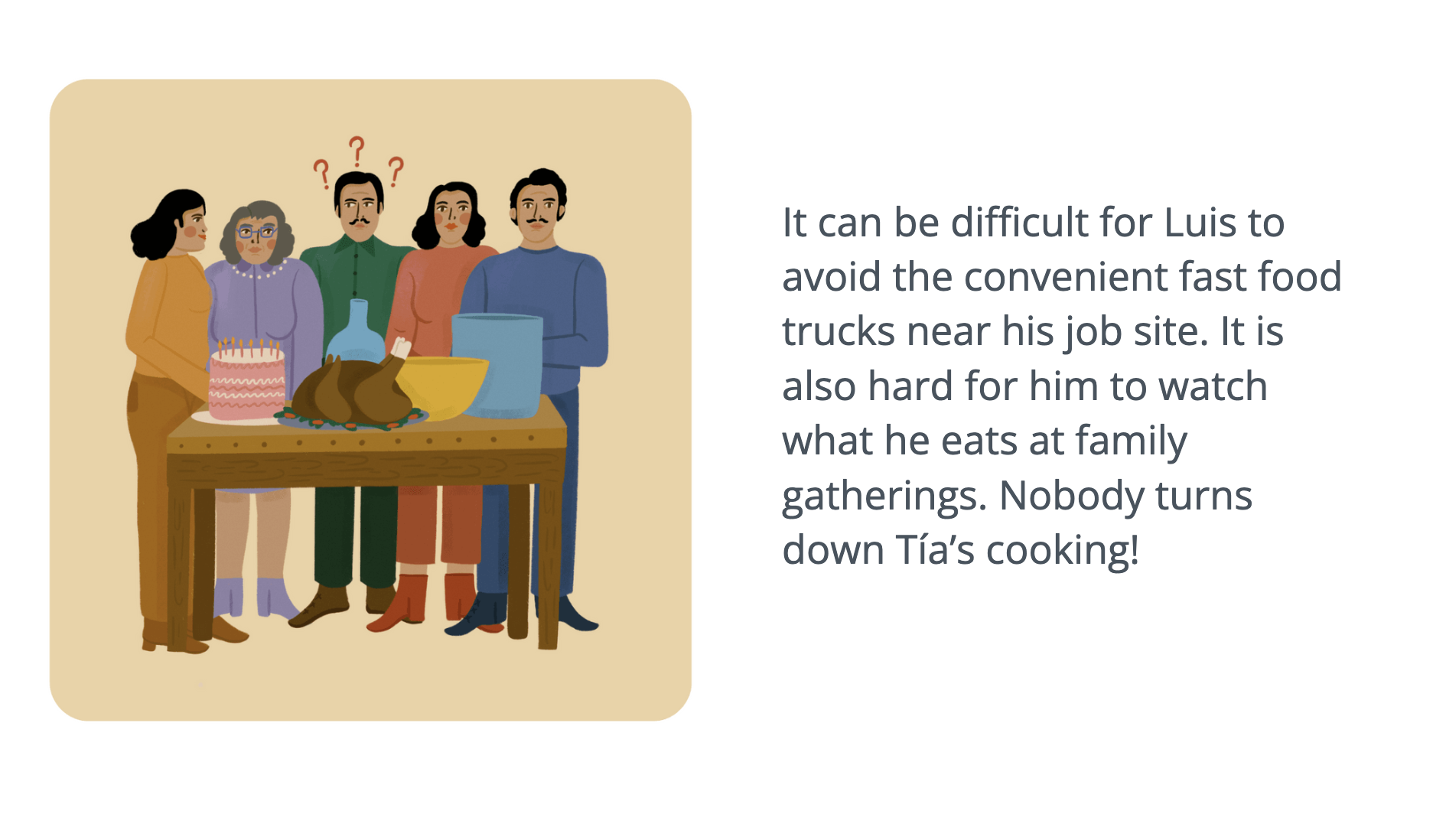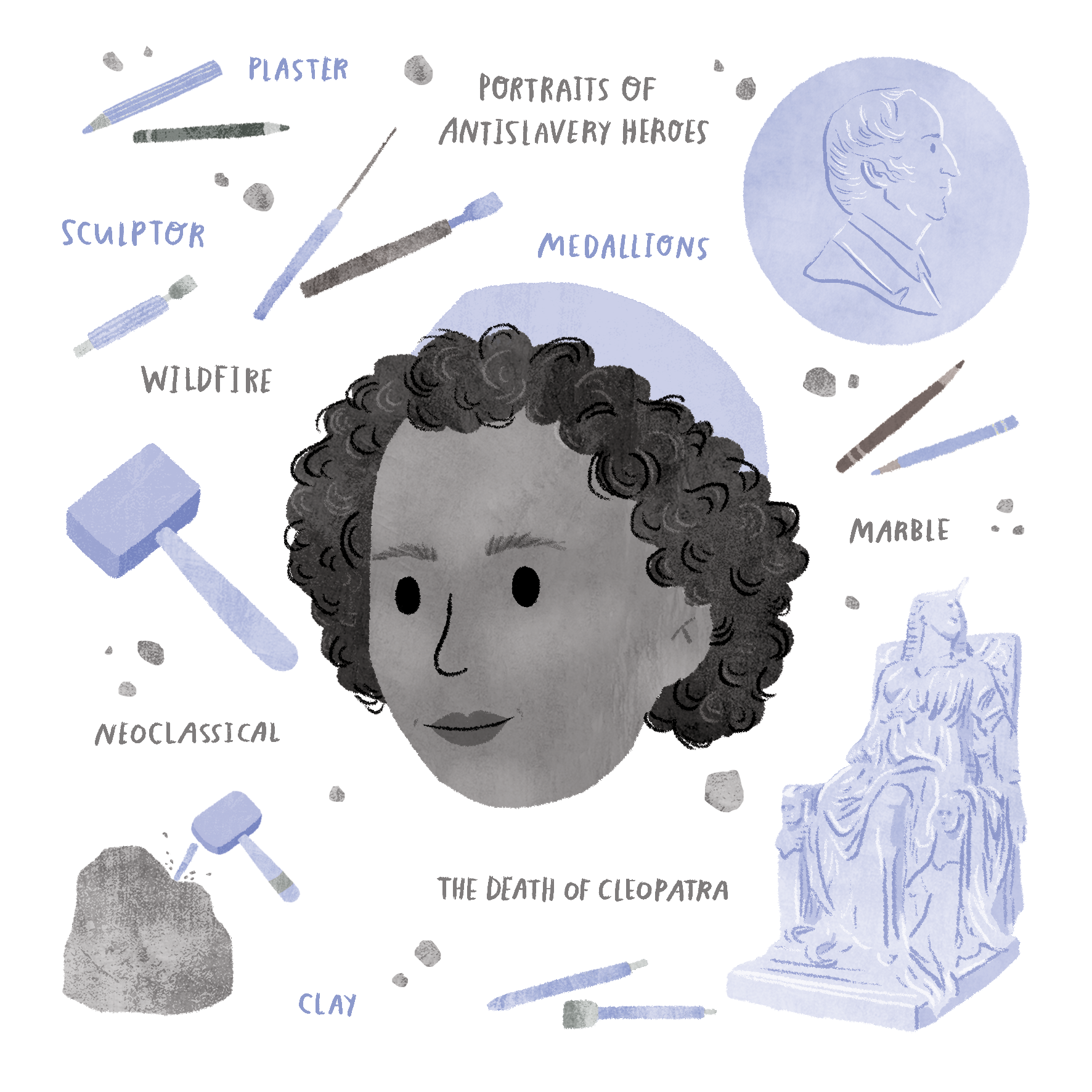
This post by Cristian Zaelzer Ph.D. is available in English and in Spanish. Scroll down or click here for the Spanish Version (En español).
For the scientist reading this post – Have you tried to explain your scientific research to family and friends? Have you noticed how many times you stumble in the basics? And let’s not even mention the complicated explanations, or how long it takes you to explain something without the jargon? And once you explain it, have you ever wondered if they are even still interested?
Science is a hard cookie to explain. But why? Why does something that you perform every day, that seems evident to you, suddenly become a challenge when you try to explain it? More importantly, how could you overcome whatever stops you from sharing your science effectively?
I have tried to analyze those questions in the last few years in practical ways, while attempting some creative solutions to close the gap between scientists and the public.
There seem to be three distinctive obstacles.
The first one relates to the time we spend training to become scientists. Golberg and Hanlon describe this as the “knowledge paradox,” the more I know, the less I can clearly explain it (1). This cognitive bias is based on the wrong assumption that your audience already knows the basics of the subject at hand. It makes evident how challenging it is to remember a time when you did not understand a concept that you are now intimately familiar with. It also implies the wrong relation, expert = good teacher.
Scientists in training spend on average between two to twelve years loading their brains with jargon, pathways, methods, and practices, and learning what makes a person a “good scientist.” However, this training neither ensures that the scientist will become a good teacher nor a good communicator of science.
That brings us to our second obstacle, the lack of formal training to communicate science. A general lack of awareness of the communication breakdown between scientists and broader audience is bad enough. But further, we try to circumvent our communication issues using the deficit model, which tells us to teach and communicate to our audience. The deficit method is the notion that the public has a knowledge gap, and that scientists only need to fill this gap through education. You hear. I teach. Not only is this method is outdated, but it ensures that you will hardly create any real, long-lasting link between you and your audience. Engagement is the key.
Finally, the third obstacle we face as science communicators is the human tendency to favour information that affirms one’s prior beliefs or hypotheses. This cognitive bias is known as confirmation bias. We experience it every time a piece of new or challenging information comes to replace an outdated one.
The three obstacles identified here require, like any cognitive bias, an active awareness of the situation, and an active correction.

Facts + emotions = insight.
Fixing Our Science Communication Breakdown… with Art!
A few days ago, I published a commentary on partnerships that involve science and art as a possible solution to this problem (2). The central aspect discussed in that work is the use of emotive tools to create trust between the different knowledge stakeholders. I also discussed there the implementation of communication practices that create a horizontal and equal sharing of information between participants.
Let me share my findings briefly.
Generally speaking, and oversimplifying, our brain coordinates responses to inputs using two main systems. One that quickly reacts to the stimuli, resulting in visceral reactions, via our limbic system. And another that analyzes the stimuli further, integrating past and new information to plan a response, via our prefrontal cortical network. The former provides the emotions, the latter the reasoning.
Concerning communication, neuroscience has gathered an exciting body of evidence that suggests that trust, a key element to effective communication, does not rely only on logic but also is influenced by different emotional states. Areas of the brain like the amygdala, the insula, and the basal ganglia are active (and quick to activate) when something, or someone, scares us, disgusts us, or makes us feel pleasure. Neuroscientists have also learned that those stimuli can cause permanent changes in the way that we perceive and remember things. Furthermore, they influence the way our prefrontal cortex makes “slowoer” decisions with respect to information.
What it has got to do with showing us a better way of effectively communicating science?
Well, effective communication requires the construction of trust between the subjects involved in the exchange. The deficit model is not an appropriate way to construct this trust, because it relies on an unbalanced power relation where the learner has no say in the method of delivery or the information received. Additionally, the use of facts-only information in the communication of science is ineffective. It is so because it ignores that human beings are emotive creatures. We react to cues outside of the realm of facts, cues introduced before we even have time to review the details. These cues dictate how we respond to the information.
Paraphrasing David Hume, we are creatures of habit, not reasoning.
So here is the grand finale. The world has cultivated experts who know how to reach into the plethora of emotive states that human beings can experience; these experts are graphic designers and artists!
The same areas in the brain that influence our disposition to trust are also involved in the aesthetic experience. Design and art can set the stage to deliver information effectively, establishing bridges between public and scientific experts. Combined with an educational model that considers the sharing of information between participants reciprocally and horizontally – the two-way engagement model – scientists, designers and artists should work together. Collaborations with graphic designers could ensure that scientific information is accessible visually and in text. Their expertise can assist us in removing the jargon unnecessary for public communication while making the stories attractive.
Meanwhile, artists can imbue scientific knowledge with emotional cues, allowing us to share facts embedded in human aspects that make the facts meaningful, exciting, and appealing.
Humanity faces multifaceted problems today. The contributions of science are more important than ever. Because of that, the communication of science should receive critical attention. As one aspect of the solution, scientists should recognize the help and contribution of other fields in creating better spaces to develop multifaceted solutions. Collaborations between scientists, designers, and artists are then more important than ever in the construction of that new fabric.
References
1) Goldberg H, Hanlon C (2019) When I say… the knowledge paradox: the more I know, the less I can clearly explain. Med Educ 53:13–14.
2) Zaelzer C (2020) The Value in Science-Art Partnerships for Science Education and Science Communication. July/August 2020, 7(4) ENEURO.0238-20.2020 eNeuro.
Por Cristian Zaelzer Ph.D. (Versión en español).
¿Has intentado alguna vez explicar tu investigación científica a tu familia y amigos?, ¿has notado cuantas veces tropiezas en los conceptos básicos de esa explicación? eso sin si siquiera mencionar las partes complicadas, cuanto tiempo nos toma decir algo sin tecnicismos. Y una vez que has llegado al meollo del asunto te preguntas ¿estarán aún interesados?
La ciencia es un tema complicado. Ese es el mensaje de fondo. ¿Pero por qué?, ¿por qué algo que hacemos rutinariamente, que nos parece evidente, de pronto se trasforma en un desafío? Y aún más importante, ¿cómo podemos superar los obstáculos que nos impiden compartir nuestra investigación científica de manera efectiva?
En los últimos años me he dedicado a analizar estás preguntas de manera práctica, tratando al mismo tiempo de alcanzar soluciones creativas que nos permitan derrumbar las barreras entre científicos y el público.
Y parece ser que enfrentamos tres obstáculos.
El primero se relaciona con el tiempo que dedicamos a formarnos como científicos. Golberg y Hanlon lo explican bajo la idea de “la paradoja del conocimiento,” mientras más sabes, más difícil te es explicarlo claro (1). Este prejuicio cognitivo se basa en la incorrecta suposición de que tus interlocutores ya conocen los principios básicos del concepto que les estás enseñando. Deja en evidencia lo difícil que es recordar los tiempos cuando nosotros no comprendíamos el concepto. También implica la relación errónea “si es un experto, es un buen profesor.” Los científicos pasan un promedio de entre dos a doce años aprendiendo sobre tecnicismos, vías de funcionamiento, metodologías, y prácticas. Todo eso mientras construimos la profesión alrededor de una filosofía específica que define a un buen científico. Sin embargo, ese entrenamiento no garantiza que seamos buenos profesores o comunicadores de ciencia.
Esto nos lleva a nuestro segundo obstáculo, la falta de entrenamiento para comunicar ciencias. Si la falta de conciencia sobre el problema de comunicación de ciencias no fuese suficientemente mala, nos hemos acostumbrado a resolver el problema usando el modelo del déficit para enseñar y comunicar. El modelo del déficit se basa en la idea de que el público posee un vacío en su fuente de conocimiento, y que lo que los científicos deben hacer es simplemente llenar ese vacío por medio de la educación. Básicamente “Usted escucha, yo le enseño.” El problema es que este modelo no solo es anticuado, sino que asegura que cualquier vínculo entre el científico y su audiencia se irrelevante y fútil. La clave aquí es conexión y mutuo compromiso.
Finalmente, el tercer obstáculo enfrentado al momento de comunicar ciencias es nuestra tendencia a preferir la información que corrobora lo que ya creemos. Este prejuicio cognitivo es conocido como el prejuicio de confirmación. Lo experimentamos cada vez que una nueva pieza de información viene a reemplazar otra que ya es obsoleta.
Los tres obstáculos identificados aquí, requieren, como cualquier prejuicio cognitivo, un estado de alerta constante acompañado de un plan de acción constante para corregir su influencia.
Hace algunos días, publiqué un comentario sobre las colaboraciones que incluyen ciencia y arte como una posible solución a el problema de comunicación (2). El punto central discutido en el artículo refiere al uso de herramientas emotivas para la creación de lazos de confianza entre los distintos actores envueltos en el desarrollo y distribución del conocimiento. En el artículo, también discuto la implementación de practicas comunicacionales que crean una distribución horizontal, igualitaria, y reciproca entre los participantes.
Permítame explicarme brevemente.
En un sentido general y sobre simplificado, nuestros cerebros coordinan las respuestas a diferentes estímulos utilizando dos sistemas mayores. Uno de ellos, conocido como el sistema límbico, toma estos estímulos y responde rápidamente con reacciones viscerales. Mientras que el otro, conocido como el sistema cortical prefrontal, analiza los estímulos integrando la nueva información con la información recibida y guardada en la memoria para planifica las reacciones apropiadas. El primer sistema nos provee con las conocidas emociones. El segundo nos provee con la razón.
Con relación al fenómeno humano de la comunicación, las neurociencias han compilado una gran cantidad de evidencia. Esta evidencia sugiere que la confianza, un elemento crucial para el desarrollo de una comunicación efectiva, no solo depende de un razonamiento lógico, sino que está íntimamente influenciada por diferentes estados emocionales. Diferentes áreas en el cerebro como la amígdala, la ínsula, y la ganglia basal, se activan cuando algo, o alguien, nos asusta, desagrada, o hace sentir gratificados. Lo neurocientíficos han aprendido que estos estímulos pueden causar cambios permanentes en las maneras como percibimos y recordamos eventos. Estos eventos adicionalmente pueden influenciar la forma en que nuestra corteza prefrontal toma decisiones con respecto a la información recibida.
Pero ¿qué tiene que ver todo esto con avanzar a formas más efectivas de comunicar ciencia?
Bueno, una comunicación efectiva requiere la construcción de confianza entre los sujetos envueltos en el intercambio. El modelo del déficit no es apropiado para construir esa confianza porque se basa en una relación de poder desbalanceada en donde el alumno no tiene voz ni voto en el método con el cual es instruido o en la información que está recibiendo. Adicionalmente, la utilización de hechos científicos como única herramienta en la comunicación de ciencias es ineficaz ya que ignora que los seres humanos son básicamente organismos emocionales. Como animales, reaccionamos a señales fuera del reino de los hechos, señales que se introducen en nuestra comunicación mucho antes de que si quiera podamos revisar los detalles de la información entregada. Esas señales dictaran nuestras respuestas probables a la información. Parafraseando a David Hume, los humanos somos creaturas de hábitos, no razón.
Y he aquí el gran final. El mundo ha cultivado por siglos expertos en las más variadas formas de expresión emocional humana. Estos expertos son los diseñadores gráficos y los artistas. Las mismas áreas del cerebro que influencian nuestra disposición a confiar, están también envueltas en como percibimos y experimentamos el arte. El diseño y el arte puede preparar el escenario para entregar la información científica de manera efectiva por medio de establecer puentes entre los expertos y el público. Esto combinado con modelos educacionales que consideran la división y distribución de conocimiento de manera reciproca y horizontal, el “modelo de compromiso compartido” puede ayudarnos a crear colaboraciones entre científicos, diseñadores, y artistas.
Las colaboraciones con diseñadores aseguran que la información sea accesible no solo visualmente pero también en el texto. La experiencia de estos profesionales puede ayudarnos a remover los tecnicismos innecesarios para la comunicación con el público mientras que transforman nuestros descubrimientos en historias atractivas para una audiencia general.
Mientras tanto, la labor de los artistas es imbuir el conocimiento científico con capas emocionales que nos permitan compartir la evidencia de la mano de los aspectos humanos que la hacen significativa, emocionante, e interesante.
Hoy en día la humanidad enfrenta problemas multifactoriales. Las contribuciones de la ciencia son más importantes que nunca y es por esta razón que la comunicación de estas al público debería recibir una atención mucho más crítica. Al mismo tiempo, como parte de una solución multifactorial, los científicos deben reconocer la ayuda y contribución de otros campos para alcanzar estos espacios multifactoriales de pensamiento resolutivo. Las colaboraciones entre científicos, diseñadores, y artistas son por la tanto más importantes que nunca en la construcción de está nueva realidad.
References
1) Goldberg H, Hanlon C (2019) When I say… the knowledge paradox: the more I know, the less I can clearly explain. Med Educ 53:13–14.
2) Zaelzer C (2020) The Value in Science-Art Partnerships for Science Education and Science Communication. July/August 2020, 7(4) ENEURO.0238-20.2020 eNeuro.





